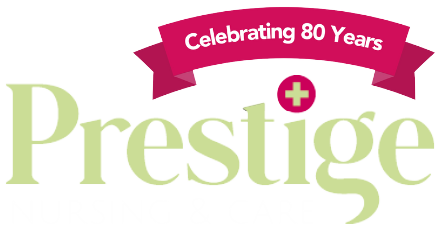A healthy diet leads to a healthy heart. A well-balanced diet filled with heart-healthy foods has many benefits including helping you manage your weight, reducing blood pressure and cholesterol and improving your mental health.
While a heart-healthy diet is important throughout all of life, this is especially so for the older generation. As we age, it is common to encounter challenges such as appetite loss or trouble cooking and meal planning. This can affect the overall health and well-being of people in their later years and limit their ability to continue living independent lives in their own homes.
Here we have put together some useful tips for creating your own heart-healthy diet. Remember that before beginning any new diet plan, it’s always a good idea to discuss it with your GP.
What is a heart-healthy diet?
According to NHS guidelines, a heart-healthy diet should be low in saturated fat and salt, high in fibre, and include plenty of fruits, vegetables, and wholegrains. These dietary choices can lower cholesterol, maintain healthy blood pressure and reduce the risk of cardiovascular disease.
A heart-healthy diet is a balanced, nutrient-rich way of eating that supports cardiovascular health and reduces the risk of heart disease, stroke, and high blood pressure. It focuses on foods that help maintain healthy cholesterol levels, reduce inflammation, and support a healthy weight, all key factors in protecting your heart, especially as you age.
KEY ELEMENTS OF A HEART-HEALTHY DIET:
- Plenty of fruits and vegetables – Aim for at least 5 portions a day. These provide essential vitamins, antioxidants and fibre to support heart health and lower blood pressure.
- Whole grains instead of refined carbs – Choose brown rice, wholegrain bread, oats and quinoa. These help reduce cholesterol and keep you feeling full longer.
- Lean proteins and plant-based options – Include skinless poultry, oily fish (like salmon and mackerel), beans, lentils and tofu. These support muscle health and heart function without the saturated fats found in red meat.
- Healthy fats in moderation – Swap saturated and trans fats for unsaturated fats like olive oil, avocado, nuts and seeds. These help raise good cholesterol (HDL) and lower bad cholesterol (LDL).
- Low salt (sodium) intake – Too much salt can lead to high blood pressure. Limit processed foods and aim for less than 6g of salt per day (about one teaspoon).
- Limit added sugars and processed foods – Cut down on sugary drinks, sweets and processed snacks, which can contribute to weight gain and inflammation — both of which strain the heart.
A heart-healthy diet isn’t about strict restrictions. It’s about making simple, sustainable choices that nourish your body and protect your heart in the long term.
The link between heart health and mental well-being
Looking after your heart isn’t just about physical health, it’s also closely tied to your mental well-being. Studies show that people with poor cardiovascular health are more likely to experience depression, anxiety, and cognitive decline.
Supporting a heart-healthy lifestyle can:
- Improve mood and reduce anxiety
- Support better sleep quality
- Increase energy and motivation
- Encourage social connection through shared meals or group activities
Encouraging regular meals, movement and meaningful routines, with help from a carer, friend or family member, can make a real difference to both heart and mind.

Tips for a well-balanced diet
Eating healthy is one of the best ways that you can improve your heart health. Here are several tips for creating your own well-balanced diet filled with heart-healthy foods.
5 a day
Fruits and vegetables are a fundamental part of any heart-healthy diet and the NHS recommends that you eat at least 5 a day. That’s 5 portions of fruit and veg in total, not 5 portions of each. They can be fresh, frozen, canned, dried or juiced. A portion of fruit or vegetables is 80g. To get the most out of your 5 a day, aim to eat a wide variety of different types and colours of fruit and vegetables.
limit salt intake
Eating too much salt (sodium) can increase your risk of high blood pressure. Although reducing the amount of salt you add to your cooking is a good first step, the majority of salt in our diets comes from canned and processed foods. Read nutritional labels and choose foods that are lower in sodium.
choose low-fat protein sources
While protein is important for heart health, you want to limit your intake of saturated fats by choosing lean meat, poultry, fish and low-fat dairy products. Legumes such as beans, lentils and peas are also good, heart-healthy sources of protein. Another healthy option is to substitute your regular choices with a plant-based alternative – for instance, swapping a hamburger for a bean or soy burger.
limit unhealthy fats
When creating a diet for a healthy heart, it is important to limit how much saturated and trans fats you consume. Limiting unhealthy fats can help reduce cholesterol and lower your risk of coronary artery disease. Swap foods with saturated and monounsaturated fats with heart-healthy choices like peanut butter, seeds, nuts, avocados and olive oil. You can also use less butter, margarine and shortening when cooking and serving.
choose whole grains
Whole grains are an excellent source of dietary fibre and other nutrients that play a role in regulating blood pressure and keeping your heart healthy. You can increase the amount of dietary fibre you eat by simply substituting your usual refined grain products like cereals, grains or pastas with whole grain alternatives. You can also be adventurous and try new whole grains such as farro or barley.
control your portion size
While there’s nothing wrong with the occasional large meal, overloading your plate often or eating until you feel stuffed can lead to eating more calories than you should. Without measuring out your ingredients it can be easy to consume more calories, salt or unhealthy fats than you realise. Using a small plate or cup is one easy way to help you control your portions. The British Heart Foundation also has a useful interactive portion guide along with tips on eating a balanced diet.
Heart-healthy foods
These are some of the healthiest foods for the heart that you can incorporate into your existing diet for better heart health.
- Leafy, green vegetables. Vegetables like spinach, kale and collard greens are known for their heart-healthy vitamins, minerals and antioxidants.
- Berries. Strawberries, blueberries, blackberries and raspberries are filled with antioxidants that can reduce several risk factors for heart disease.
- Nuts. Heart-healthy foods like nuts are a great source of fibre and other macronutrients that can help protect against heart disease.
- Avocados. Rich in heart-healthy monounsaturated fats, avocados have been linked to lower levels of cholesterol and a reduced risk of heart disease.
- Fatty fish. Fish like salmon, mackerel, sardines and tuna are packed with omega-3 fatty acids which may have a protective role in the risk of developing heart disease.
- Beans. Besides being packed with protein, beans, lentils and other legumes also contain magnesium, iron and potassium. Multiple studies have shown that eating beans can reduce certain risk factors for heart disease.
- Dark chocolate. Consuming dark chocolate in moderation may lower your risk of heart disease since dark chocolate is rich in antioxidants like flavonoids.
How to support an elderly loved one with eating well
Supporting an older adult with healthy eating habits can sometimes be challenging. As people age, it’s common to experience changes in appetite, taste, digestion, and energy, all of which can affect their relationship with food. Health conditions, medication side effects, and even loneliness can make preparing or enjoying meals more difficult.
Common concerns include:
- Loss of appetite or disinterest in meals
- Difficulty chewing or swallowing, especially in those with dental issues or certain conditions like Parkinson’s or stroke recovery
- Forgetfulness around eating, particularly in those living with dementia
- Poor meal choices due to convenience, fatigue, or lack of cooking ability
- Weight loss or malnutrition, which may go unnoticed if gradual
Ways you can help:
- Offer smaller, frequent meals that are easy to eat and rich in nutrients
- Make mealtimes social — eating together can encourage better intake and boost mood
- Adapt food textures to suit chewing or swallowing ability (e.g. soft foods, soups, purées)
- Support hydration alongside meals with water, tea or high-fluid foods like fruit or yoghurt
- Use visual prompts like meal plans, food diaries or fridge notes for those with memory issues
- Involve your loved one in meal choices, even simple ones — this helps preserve independence and dignity
For more practical support with preparing meals at home, explore our guide on Cooking for the Elderly – filled with essential tips from our experienced carers.
INVOLVING OLDER ADULTS IN MEAL PLANNING
When someone feels involved in their own care, including what they eat, they’re more likely to maintain healthy habits and feel a greater sense of independence.
Ways to include older adults in planning:
- Discuss food preferences, cultural favourites or childhood dishes
- Create a weekly menu together using heart-healthy ingredients
- Go shopping together (in person or online)
- Involve them in light prep tasks like chopping vegetables or setting the table
Need inspiration? Take a look at our meal planning for the elderly guide. You’ll find simple, nutritious recipes designed to be easy, satisfying, and heart-friendly.
Expert home care, for all of life
At Prestige Nursing & Care, we are dedicated to making it as easy as possible for you to lead a healthy and active lifestyle. We are trusted by families up and down the country to provide private care for the elderly at home for all of life, evolving the level and type of care we provide to meet changing needs.
Our dedicated carers can provide a variety of services that can help you develop a healthier lifestyle and maintain your independence including:
Our dedicated carers can provide a variety of services that can help you develop a healthier lifestyle and maintain your independence including:
- Meal planning and cooking healthy and nutritious meals
- Light housekeeping
- Encouraging exercise, as directed by your healthcare provider
- Assistance with personal care, including bathing and toileting
- Assistance with shopping
- Medication management
- Escorting you to doctor appointments or other engagements
Find out why our clients choose Prestige Nursing & Care for a high-quality, responsive home care service.
A helping hand at home
For 80 years, Prestige Nursing & Care has been trusted by our clients and their families to provide competent and compassionate home care. Our care is focused on improving health and overall well-being, and all in the place people love most – their own homes.
Call us on 0808 239 1525 and our friendly care experts will discuss your care and support needs. You can also fill out our online enquiry form or email info@prestige-nursing.co.uk. We provide impartial guidance and advice so you can make the right choice for you and your family.

